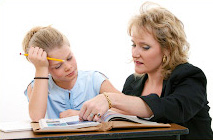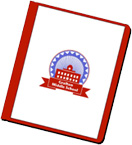How can school personnel effectively implement evidence-based practices or programs?
Page 8: Use Implementation Guidelines and Supports
 Another way to increase fidelity of implementation is to standardize the implementation procedures. One way to do this is to use existing manuals or guidelines that describe step-by-step procedures that teachers can follow to implement programs as designed. For complex practices or programs, a manual provides detailed procedures for each core component as well as for the overall program. A manual increases the consistency of implementation from person to person and for individuals from day to day and helps ensure a degree of program quality. The more specific the manual, the greater the potential for teachers to implement a practice or program with fidelity.
Another way to increase fidelity of implementation is to standardize the implementation procedures. One way to do this is to use existing manuals or guidelines that describe step-by-step procedures that teachers can follow to implement programs as designed. For complex practices or programs, a manual provides detailed procedures for each core component as well as for the overall program. A manual increases the consistency of implementation from person to person and for individuals from day to day and helps ensure a degree of program quality. The more specific the manual, the greater the potential for teachers to implement a practice or program with fidelity.
For Your Information
- When an implementation manual includes research evidence to support the effectiveness of a practice or program, teachers are often more willing to implement it.
- Clarifying the roles and responsibilities of the individuals involved in implementing the practice or program helps to promote fidelity of implementation.
 Though commercially available programs are usually accompanied by their own manuals, this may not be the case for certain practices (e.g., differentiated instruction, peer tutoring). In these instances, school personnel will find it necessary to create their own implementation manual. School personnel, perhaps with the assistance of the PD provider, begin this process by identifying the core components of the practice. Doing so should make it relatively easy for school personnel to list the steps needed for effective implementation.
Though commercially available programs are usually accompanied by their own manuals, this may not be the case for certain practices (e.g., differentiated instruction, peer tutoring). In these instances, school personnel will find it necessary to create their own implementation manual. School personnel, perhaps with the assistance of the PD provider, begin this process by identifying the core components of the practice. Doing so should make it relatively easy for school personnel to list the steps needed for effective implementation.
Click on the movie below for a demonstration of how to identify the steps for effectively teaching a writing strategy (time: 2:13).
Transcript: Implementing POW
This year the middle school teachers will be implementing a new writing strategy called POW. The implementation team decides that it needs to conduct a task analysis of this strategy to help monitor fidelity of implementation. To learn more about POW, the team first reviews the IRIS Module Improving Writing Performance. Doing so, they learn that the POW writing strategy consists of three components: P stands for “pick an idea,” O stands for “organize thoughts,” and W stands for “write and say more.”
The team recognizes that these three steps need to be included in the task analysis. The teachers can instruct their students about how to apply the POW writing strategy by using self-regulated strategy development or SRSD, a scientifically validated framework for teaching learning strategies.
SRSD consists of six steps:
Step 1 is Develop Background Knowledge
Step 2 is Discuss the Strategy
Step 3 is Model It
Step 4 is Promote It
Step 5 is Support the Students
Step 6 is Encourage Independent Practice
In order to create a task analysis, the team first lists the six steps of SRSD, which are then easily adapted for teaching the POW writing strategy. The team also thinks it is important for the teachers to discuss and model each of the three POW components. Therefore, they incorporate each component of the POW writing strategy under steps 2 (pause) and 3 (pause). By developing this task analysis, the team has outlined what teachers need to do to implement the POW writing strategy with fidelity.
Besides outlining the step-by-step procedures of a practice or program, school personnel can offer in-depth information in the manual on effective implementation for each step. For instance, for the writing strategy discussed in the movie above, the manual might include a list of questions that teachers can use to encourage discussion during the Discuss the Strategy step.
In addition, the manual may address other information related to implementation, such as:
- Which students will participate (e.g., struggling readers, second graders)
- How long the program will continue (e.g., the entire semester, ten weeks)
- Length of each session
- Frequency of sessions
- Materials needed
- Procedures to follow in the event that a teacher’s fidelity is low
Regardless of whether the practice or program is accompanied by a manual, the implementation team may want to develop supplemental guidelines that address issues such as:
- Who conducts the program or practice
- Who is available to provide help or guidance
- What are the roles of teachers, mentor teachers, school coaches, and administrators
- What to do if a lesson is missed or interrupted due to schedule alterations (e.g., a fire drill, field trip, assembly)
- What to do when a teacher is absent
Click the school logos below to learn about the specific implementation guidelines used by each school.

|

|

|
Use Implementation Guidelines and Supports
![]() Paige Elementary School
Paige Elementary School
 The commercially available progress monitoring system that Paige Elementary School purchased included procedural guidelines. These guidelines provided detailed information on the administration and scoring of probes, on how to enter data using the software, and on how to understand and use the data to guide instruction.
The commercially available progress monitoring system that Paige Elementary School purchased included procedural guidelines. These guidelines provided detailed information on the administration and scoring of probes, on how to enter data using the software, and on how to understand and use the data to guide instruction.
|
Progress Monitoring Manual Table of Contents |
|
| Selecting Probes Pre-Reading Measures Reading Measures |
1 3 5 |
| Needed Materials | 8 |
| Administering Probes | 9 |
| Scoring Probes | 11 |
| Graphing Scores | 14 |
| Setting Goals | 15 |
| Making Data-Based Decisions | 18 |
| i | |
Although the Paige implementation team finds the manual to be comprehensive, they believe it will be beneficial to provide additional guidance on school specific information such as the frequency of administration, school personnel who can assist with administration of probes, etc.
(Close this panel)
Use Implementation Guidelines and Supports
![]() Grafton Middle School
Grafton Middle School
 The reading program purchased by Grafton Middle included a comprehensive procedural manual. However, the implementation team thinks that they can increase the fidelity of implementation by creating a brief troubleshooting guide for the teachers implementing the program. This supplemental guide provides information not covered in the manual and that is more specific to Grafton Middle. Below is a section of the supplemental guide that the team created.
The reading program purchased by Grafton Middle included a comprehensive procedural manual. However, the implementation team thinks that they can increase the fidelity of implementation by creating a brief troubleshooting guide for the teachers implementing the program. This supplemental guide provides information not covered in the manual and that is more specific to Grafton Middle. Below is a section of the supplemental guide that the team created.
| Reading Program Supplemental Guidelines |
|
| What should I do when there’s a substitute? | |
| Leave instructions for the substitute about what time you usually conduct the reading lesson, what lesson to teach, and which groups students are assigned to. Mark or leave a copy of that day’s scripted lesson. |
|
| If a lesson did not go well, should I repeat it? | |
| Because of the way the instruction is scaffolded, it should not be necessary to repeat a lesson. Each lesson includes review of the previous lesson’s content. Therefore, proceed with the next lesson. If you do this and still have concerns, consult your coach. |
|
| Who do I consult when I have questions? | |
| First, ask one of your grade-level coaches. If neither coach is available, ask one of the other grade-level coaches. |
|
(Close this panel)
Use Implementation Guidelines and Supports
![]() DuBois High School
DuBois High School
 Though the training provided by the PBIS Technical Assistance Center outlines the core principles of the PBIS approach, the PBIS team at DuBois High School needs to develop the details of the program that they will implement at their school. They will make a variety of decisions based on the school’s and the students’ needs (e.g., specific behavioral goals). The implementation team at DuBois High will use a guidelines template developed by the PBIS Center to guide their decision-making and to help them document their choices. They will make these guidelines available to everyone at the school who is involved in the implementation of PBIS (e.g., teachers, principals, cafeteria workers).
Though the training provided by the PBIS Technical Assistance Center outlines the core principles of the PBIS approach, the PBIS team at DuBois High School needs to develop the details of the program that they will implement at their school. They will make a variety of decisions based on the school’s and the students’ needs (e.g., specific behavioral goals). The implementation team at DuBois High will use a guidelines template developed by the PBIS Center to guide their decision-making and to help them document their choices. They will make these guidelines available to everyone at the school who is involved in the implementation of PBIS (e.g., teachers, principals, cafeteria workers).
Initial Action Plan for Implementing Positive Behavior Support |
|||||||||||||||||||||||||||||||
|
|
||||||||||||||||||||||||||||||
|
|
||||||||||||||||||||||||||||||
Team Leader will be: Mr. Roberts |
|||||||||||||||||||||||||||||||
|
|||||||||||||||||||||||||||||||
|
|||||||||||||||||||||||||||||||
|
|||||||||||||||||||||||||||||||
|
|||||||||||||||||||||||||||||||
(From the Positive Behavioral Interventions & Supports [PBIS] website, http://www.pbis.org/pbis_resource_detail_page.aspx?Type=2&PBIS_ResourceID=356)
(Close this panel)
Activity
Recall that the school improvement team at Truman Elementary School reviewed the practices and programs addressing reading comprehension for third-grade students on the What Works Clearinghouse website. They decide to implement Peer Assisted Learning Strategies (PALS), a classwide peer tutoring program. Before they can begin, the implementation coordinator needs your help to identify and list the steps necessary for effectively implementing PALS.
 Click on the binder to the right to locate the information you need to identify the steps for implementing PALS.
Click on the binder to the right to locate the information you need to identify the steps for implementing PALS.- List the step-by-step procedures teachers should follow to implement PALS effectively.
The answers for this activity may vary somewhat. This is only one of a number of different ways to dissect the PALS 2–6 procedures. For instance, “monitor students” could be listed as a separate step instead of as a sub-step. At a minimum, the procedures for PALS 2–6 should include implementing the three activities, implementing each activity for the recommended period of time, having students switch partners after five minutes for each activity, following the script, and monitoring the students.
PALS 2–6
Step-by-Step Procedures
General Procedures
- Introduce PALS session
- Have students transition to pairs quickly and quietly
- Have system in place for students to quickly and easily access materials
Specific Procedures
- Implement Partner Reading with Retell for 12 minutes
- Follow script
- Have students switch partners after 5 minutes
- Instruct lower performing reader to retell story for 2 minutes
- Monitor students
- Implement Paragraph Shrinking for 10 minutes
- Follow script
- Have students switch partners after 5 minutes
- Monitor students
- Implement Prediction Relay for 10 minutes
- Follow script
- Have students switch partners after 5 minutes
- Monitor students
- Have students put away materials in 2 minutes or less